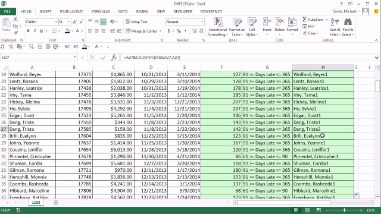
This process involves a meticulous botkeeper vs veryfi review of the banking transactions, comparing them with the company’s records to identify any discrepancies. Once identified, the discrepancies must be addressed through appropriate adjustments, such as correcting erroneous entries, reconciling deposits and withdrawals, and updating the general ledger. The beginning balance section of the bank reconciliation report reflects the initial financial position of the account, serving as a critical reference point for the reconciliation process and subsequent account balance assessments. The final step in running a bank reconciliation report in Quickbooks Online involves clicking on the ‘Run Report’ button, initiating the generation of the comprehensive report that reconciles the financial data for the selected account. This process helps identify any discrepancies, such as unrecorded transactions, bank errors, or timing differences.
How to reconcile a bank statement in the QBO bank reconciliation window
You’ll need a few items to perform a bank reconciliation, including your bank statement, internal accounting records, and a record of any pending cash transactions (either inflows or outflows). To reconcile means to “make one view or belief compatible with another.” In accounting, that means making your account balances equal to one another. More specifically, a bank reconciliation means balancing your bank statements with your bookkeeping. When you reconcile how much should you be spending on marketing to your bank statements, you are verifying that each transaction posted in QBO is an actual transaction. This is done in order to check for potential data-entry errors, such as duplicate transactions, missing transactions, or incorrectly entered transactions.
Sometimes, taking a breather can help you spot what’s causing the difference.
© 2024 Intuit Inc. All rights reserved

Trace the transactions from the detailed list to your bank statement. When you have a match, click the radial button next to the transaction and place a checkmark next to the transaction on your bank statement. When you click a radial button, the transaction will be reflected in the summary of cleared transactions at the top of the screen. Book transactions are transactions that have been recorded on your books but haven’t cleared the bank. As a small business, you may find yourself paying vendors and creditors by issuing check payments. Note that this process is exclusively for reconciliations performed by hand.
- There are a few reasons your QuickBooks data may not match your account statements, including bank service charges, checks that haven’t cleared, and transactions that haven’t been entered in QuickBooks yet.
- However, as a business owner, it’s important to understand the reconciliation process.
- Sign up to receive more well-researched small business articles and topics in your inbox, personalized for you.
- To complete the reconciliation process, you must verify that the difference is zero.
- You cannot reconcile a bank account just by adding or matching transactions.
- Once you’re done, you should see a difference of $0, which means your books are balanced.
We offer reconciliation reports, discrepancy identification, and live accountants to work with for ease and confidence when closing your books. It’s important to perform a bank reconciliation periodically to identify fraudulent activities or bookkeeping and accounting errors. This way, you can ensure your business is in solid standing and never be caught off-guard.
QuickBooks will provide a link on the screen where you input the statement summary to help you find the changed transaction. This action finalizes the process and provides a detailed breakdown of the account’s transactions, helping to ensure accuracy and transparency in financial records. It is a crucial step for businesses to maintain a clear understanding of their financial status and make informed decisions.
Step 1: Navigate To the Reconciliation Window
If your sidebar menu is not what is shown in our tutorial, it means that you are on Business View. We prefer and recommend using the Accountant View because it shows a full range of business accounting features and tools that you can use in QuickBooks. Once you’re done, you should see a difference of $0, which means your books are balanced.
This crucial step ensures that the financial records are accurately balanced with the bank statements. Once the account is selected, users are guided to review and match the transactions in Quickbooks Online with those in the bank statement. The software then automatically statement of retained earnings definition marks the matched transactions and highlights any discrepancies for further investigation. A bank reconciliation report plays a vital role in the overall accounting process, as it provides a clear overview of the company’s cash position and helps in identifying potential fraud or irregularities. Ultimately, the meticulous maintenance of financial accuracy through bank reconciliation reports is essential for making informed financial decisions and ensuring regulatory compliance.
QuickBooks Online, our best small business accounting software, can help you ensure the accuracy of your bank transactions with its excellent bank reconciliation feature. You’ll be able to identify discrepancies, such as bookkeeping errors or omissions. Many bank statements will separately summarize deposits and withdrawals as does the summary at the top of the QuickBooks reconciliation screen.
Today, we will guide you through the step-by-step process of running a bank reconciliation report in QuickBooks Online, providing you with the tools to navigate through your company’s financial data with confidence and precision. By following these steps, you will gain valuable insights into your financial transactions, including the beginning balance, deposits, checks, and any potential discrepancies. We will discuss the importance of regularly conducting bank reconciliation reports and offer practical solutions for addressing any discrepancies that may arise.
